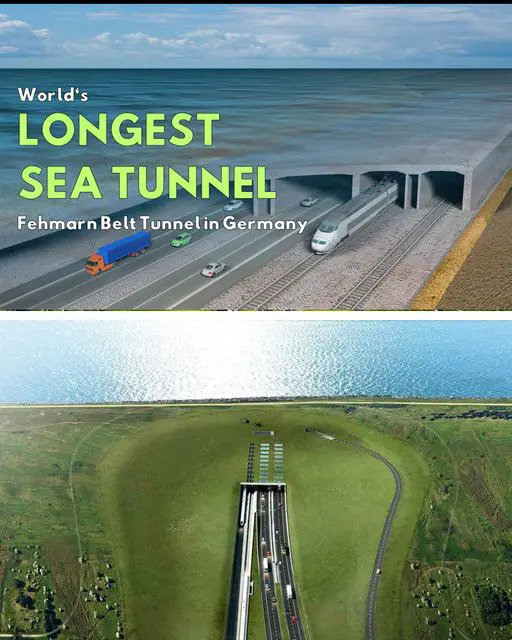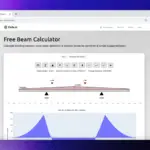The Fehmarnbelt tunnel is a colossal infrastructure project under construction, set to redefine connectivity between Denmark and Germany. Spanning an impressive 18 kilometers beneath the Fehmarn Belt, a strait in the Baltic Sea, this tunnel will become the longest immersed tunnel in the world upon completion. Its construction marks a milestone in engineering and promises to significantly enhance travel and trade between the two countries.

What Is an Immersed Tunnel?
Unlike traditional bored tunnels, an immersed tunnel is constructed using prefabricated sections that are sunk into a dredged trench on the seabed and then covered with protective material. This method is particularly effective for underwater tunnels, enabling longer stretches to be constructed efficiently and securely.
The Fehmarnbelt tunnel will consist of 79 massive concrete sections, each measuring 217 meters long and weighing up to 73,000 tons. These sections will be assembled in a specialized production facility before being transported and submerged into the Baltic Sea.
Strategic Importance of the Fehmarnbelt Tunnel
The tunnel is strategically significant for multiple reasons:
- Connecting Northern Europe
The Fehmarnbelt tunnel will directly link the Danish island of Lolland with the German island of Fehmarn, forming a vital part of the European transport corridor that connects Scandinavia to Central Europe. - Boosting Trade and Tourism
By reducing travel time and improving logistics, the tunnel is expected to foster trade, boost tourism, and strengthen economic ties between Denmark, Germany, and the broader European region. - Time Efficiency
Once completed, the tunnel will drastically cut the travel time between the two countries. For instance, the current ferry crossing takes about 45 minutes, whereas the tunnel will allow cars to traverse the distance in just 10 minutes and trains in 7 minutes.
Engineering Marvels and Challenges
The Fehmarnbelt tunnel is a remarkable feat of engineering, facing numerous challenges and demanding innovative solutions.
Construction Challenges
- Seabed Preparation: Dredging the trench for the immersed tunnel required precision to ensure a stable foundation for the concrete sections.
- Environmental Concerns: Minimizing the ecological impact of the project on the sensitive marine environment of the Baltic Sea has been a critical focus. Strict measures have been implemented to protect marine life and water quality.
- Weather Conditions: The unpredictable weather of the Baltic region has added complexities to construction timelines and safety protocols.
Technological Innovations
The tunnel incorporates advanced technologies to ensure safety, durability, and efficiency. These include state-of-the-art ventilation systems, fireproof linings, and emergency escape routes.
Key Benefits of the Fehmarnbelt Tunnel
- Faster Transportation
The tunnel will enable seamless travel for both passenger vehicles and freight trains, cutting hours off journeys between northern and central Europe. - Economic Growth
Enhanced connectivity is expected to stimulate regional economies by reducing logistics costs and opening up new markets for businesses in Denmark and Germany. - Environmental Advantages
By replacing ferry services with a fixed link, the tunnel is projected to reduce carbon emissions and contribute to more sustainable transportation.
Timeline and Future Prospects
Construction of the Fehmarnbelt tunnel began in 2020 and is expected to be completed by 2029. Upon its inauguration, the tunnel will serve as a critical artery for the Trans-European Transport Network (TEN-T), which aims to improve infrastructure across Europe.
The Fehmarnbelt project also paves the way for future underwater infrastructure endeavors. Its success could inspire similar projects globally, further cementing the role of immersed tunnels in modern transportation.
Conclusion
The Fehmarnbelt tunnel is much more than an engineering project; it is a transformative vision for connectivity and progress. By linking Denmark and Germany through the longest immersed tunnel in the world, it sets a new benchmark for innovation in infrastructure. With its numerous economic, environmental, and logistical benefits, the Fehmarnbelt tunnel is poised to become a cornerstone of European integration and mobility.





















